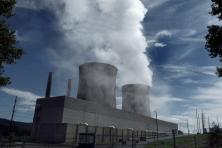The first big milestone for implementing the Oregon Climate Action Plan (OCAP) was quietly met last month, as twelve state agencies delivered their plans to carry out the Governor’s Executive Order on climate – EO 20-04 (signed in March 2020). By and large, the state agencies with specific directives stepped up to the plate with detailed plans to achieve major climate progress in Oregon. By design, these initial reports largely focus on upcoming public engagement opportunities to make these plans a reality, but there are also glimpses of some promising outcomes for the work ahead. This includes wide-ranging climate action, a concerted effort towards centering impacted communities and equity in climate action initiatives, and a wide array of clean energy, cost savings and health benefits for Oregonians on the horizon.
Here’s an update on what we’ve learned about Oregon’s Climate Action Plan since our initial analysis of OCAP when the Governor signed the executive order in March. Stay tuned for our deeper dive blogs and updates on key pieces of OCAP in the coming months.
Wide-ranging climate action
From the day it was signed, we knew OCAP represents a huge opportunity for bold climate action in Oregon, but seeing the array of specific actions outlined in state agencies’ May 15th plans really drives it home. They outline dozens of studies and rulemakings that will happen in the coming months and years, and will culminate in driving down climate pollution across the economy and increasing clean energy statewide. State agencies plan to set up programs and policies that wring out greenhouse gas emissions in numerous ways, like boosting transportation electrification, replacing petroleum with cleaner fuels, installing more clean energy infrastructure, constructing cleaner and more energy-efficient homes and commercial buildings, promoting industrial innovation, reducing food waste, curbing landfill methane emissions, and requiring smarter land use planning.
While many of the actions outlined in the reports were specifically directed by OCAP, agencies also included additional actions to prioritize climate action. For example, the Public Utility Commission (PUC) plans to consider options for incorporating the social cost of carbon into its utility planning and the Oregon Department of Energy (ODOE) is expediting an update of its carbon dioxide standard to increase the amount that newly-sited fossil energy facilities must pay.
It’s not yet clear precisely how far all of these actions will get us towards reaching the state’s climate goals, but it is clear that OCAP can deliver significant reductions in climate change-causing pollution. The majority of greenhouse gas emissions in the state are covered in one way or another via OCAP, with a particular focus on our transportation, buildings, energy, and industrial sectors. The Oregon Global Warming Commission will monitor and report progress on achieving OCAP goals. Some agencies will even be working to pave the way for future climate action (e.g. ODOE is planning to conduct an analysis of the least cost decarbonization actions and pathway options to achieve the state’s climate goals).
Centering impacted communities
OCAP’s focus on centering the voices of and outcomes for the most impacted communities—those communities who are hit first and worst by climate impacts—is a critical component to Oregon’s path to a more equitable low carbon future. These communities include communities of color and lower-income communities who are more likely to live and work close to major pollution sources. Centering these communities in climate action is critical to correct historic injustices and design sustainable and equitable climate solutions that work for everyone.
To this end, OCAP requires state agencies to consult with impacted communities and the Environmental Justice Task Force on climate actions as well as prioritize actions that help impacted communities adapt to climate change. OCAP also directs the establishment of an interagency work group to address climate harms to impacted communities. Here are some of the agencies’ signs of progress to achieve OCAP’s equity goals:
- Consultation and seats at the table: As part of the Oregon Department of Environmental Quality’s (DEQ) work plan to create a “cap-and-reduce” program, DEQ is planning regular engagement with Tribes and the Environmental Justice Task Force throughout the process. DEQ is also including seats for Tribal representatives and representatives of impacted communities as part of the core make-up of their Rulemaking Advisory Committee. This is a step in the right direction, but frankly should be a minimum expectation for all state agencies moving forward.
- Improvements to internal operations and policy priorities: The Public Utility Commission (PUC) proposed changes to the PUC’s structure, operations, and policy to better address the needs of impacted communities. PUC proposed to hire a Diversity, Equity, and Inclusion (DEI) Outreach Coordinator and develop a DEI Operations Plan. In addition, PUC proposed to: facilitate streamlined approval for measures and programs targeted toward low-income ratepayers; examine rate design options to benefit low-income customers; and require climate pollution reduction activities and pilots including dedicated actions to serve low-income communities. PUC also acknowledged the need for funding opportunities for community-based organizations to facilitate participation in PUC proceedings. Some of these proposed changes represent years of work by climate and environmental advocates.
- Capacity building, better data, and cross-agency coordination: The Oregon Health Authority (OHA) outlined a number of key initiatives beyond their specific OCAP directives. OHA plans to facilitate the development of a DEI Blueprint for state agencies to use when planning and implementing climate change adaptation strategies. It is also planning workshops to build the capacity of local and tribal health departments and their partners to integrate climate change into public health efforts as well as providing them with regional climate and health equity profiles consisting of health equity data (including identification of most impacted communities) to inform local planning and programming.
Advocates are continuing to push state agencies and Governor Kate Brown to center the voices of impacted communities in OCAP implementation as we move forward. Shoring up these expectations is important at the outset, as the letters we and other partners sent to the Governor and state agencies (linked below) outline.
Numerous benefits of meaningful climate action
As the May 15th plans illuminate, climate action creates many benefits across Oregon, from reducing climate and air pollution, improving public health, saving consumers money and increasing energy and community resilience. The Oregon Department of Energy estimates that updating the state’s appliance energy efficiency standards (as required by OCAP) will not only reduce emissions, but also save Oregonians over $35 million a year on utility bills in 2025 and over $100 million a year by 2035. As part of its work, the Department of Environmental Quality is planning to study the societal and public health benefits of cap and reduce program options as well as the benefits of cleaner fuels - efforts that can reduce air pollution and will likely result in improved health outcomes and health care cost savings. Other plans reference resilience and equity as additional benefits to taking climate action.
The road ahead
As outlined above, we now have glimpses from the May 15th plans of what OCAP can deliver, but there is much more work ahead to make it a reality. Many agency plans are still being shaped and finalized. Climate Solutions and other advocates within the Renew Oregon coalition have already submitted letters to influence those plans - see these letters to the PUC, ODOT, and DEQ. There’s also an effort underway to encourage the Oregon Global Warming Commission to provide a coordinating role on the natural resource agency plans which have substantial room for improvement. Other state agencies still have their major plans to come (e.g. Building Codes Division will deliver a report by September 15th that outlines options for achieving the 2030 energy efficiency goal over the next three cycles of updating the state building code). Multiple rulemaking processes have already begun to make directives within OCAP a reality, with more starting in the coming months.
There’s still a long road ahead and many opportunities for advocacy, but in just three months since the ink on the executive order dried, the Oregon Climate Action Plan is already showing promising signals of delivering meaningful and equitable climate action for our state.
Stay tuned for our deeper dive blogs and updates on key pieces of OCAP over the coming months.




